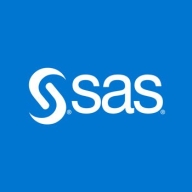

SAS Access and SSIS compete in the data integration space. SAS Access is favored for features, while SSIS is appealing for its comprehensive and integrated capabilities.
Features: SAS Access offers strong data integration capabilities, leveraging its strength in analytics and statistical modeling. It efficiently supports connectivity with a wide range of databases. SSIS provides seamless integration within Microsoft's ecosystem, offering robust ETL operations and extensive data transformation tools. It is a preferred choice for businesses using Microsoft's suite.
Ease of Deployment and Customer Service: SAS Access offers straightforward deployment with strong customer service support. SSIS benefits from Microsoft's extensive support network, with ample documentation and community resources. Deployment is facilitated by its integration with Windows environments, making it convenient for firms using Microsoft technologies.
Pricing and ROI: SAS Access typically incurs a higher upfront investment due to its analytical capabilities and compatibility. It offers significant ROI for companies relying on statistical work. SSIS is often more cost-effective for organizations already using SQL Server, with lower setup costs and faster ROI for those needing reliable ETL management.
| Product | Market Share (%) |
|---|---|
| SSIS | 5.7% |
| SAS Access | 0.4% |
| Other | 93.9% |


| Company Size | Count |
|---|---|
| Small Business | 26 |
| Midsize Enterprise | 19 |
| Large Enterprise | 57 |
SSIS is a versatile tool for data integration tasks like ETL processes, data migration, and real-time data processing. Users appreciate its ease of use, data transformation tools, scheduling capabilities, and extensive connectivity options. It enhances productivity and efficiency within organizations by streamlining data-related processes and improving data quality and consistency.
We monitor all Data Integration reviews to prevent fraudulent reviews and keep review quality high. We do not post reviews by company employees or direct competitors. We validate each review for authenticity via cross-reference with LinkedIn, and personal follow-up with the reviewer when necessary.